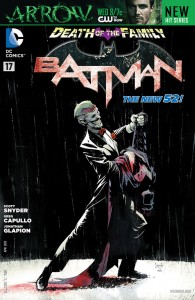 In the history of Batman and The Joker, there are only a couple of iconic story endings that I can think of. There’s the end of the third issue of Frank Miller’s The Dark Knight Returns, where Batman pursues Joker with the intent to kill him, finds himself unable to pull the trigger, and Joker takes one final shot at Batman by killing himself to frame Batman for his murder. And there’s the end of Alan Moore’s The Killing Joke, where Joker and Batman share a laugh when Batman finally understands how connected he is to Joker… and really, that’s about it. Sure, you’ve got Jim Starlin’s Death in The Family, but I really don’t remember how that actually ends; all I remember is Joker swinging the crowbar and Batman carrying Robin’s body. And yeah, there’s the Steve Englehart and Marshall Rogers Joker Fish story, but all that easily comes to mind on that one is Joker with the fish.
In the history of Batman and The Joker, there are only a couple of iconic story endings that I can think of. There’s the end of the third issue of Frank Miller’s The Dark Knight Returns, where Batman pursues Joker with the intent to kill him, finds himself unable to pull the trigger, and Joker takes one final shot at Batman by killing himself to frame Batman for his murder. And there’s the end of Alan Moore’s The Killing Joke, where Joker and Batman share a laugh when Batman finally understands how connected he is to Joker… and really, that’s about it. Sure, you’ve got Jim Starlin’s Death in The Family, but I really don’t remember how that actually ends; all I remember is Joker swinging the crowbar and Batman carrying Robin’s body. And yeah, there’s the Steve Englehart and Marshall Rogers Joker Fish story, but all that easily comes to mind on that one is Joker with the fish.
When it comes to endings, there aren’t a whole hell of a lot that you can really point to as classic. Most Joker stories wind up one of a couple or three ways: Batman stops Joker in the middle of whatever his plan is in the nick of time and slaps him into Arkham, Batman stops Joker in the middle of whatever his plan is in the nick of time and Joker escapes, or Batman stops Joker in the middle of whatever his plan is in the nick of time and Joker appears to die and disappear. Some combination of these endings have been popping up in Batman / Joker stories literally since the first one, and none of them are particularly memorable… particularly since there are rarely any lasting consequences to the story. That’s part of why The Dark Knight Returns and The Killing Joke stand out – as, for the most part, standalone stories, the ending is, you know, the ending. In the regular monthly comics however, it’s hard to have one of these conclusions stand out since the events of the story are never permanent; hell, the most “permanent” Joker effects have been the killing of Jason Todd and the crippling of Barbara Gordon, and both of those have since been retconned.
All of which is a long way to go to start talking about Batman #17, and the conclusion of Scott Snyder’s Death of The Family crossover. In some ways, this ending isn’t really particularly special, in the sense that the actual mechanics of it are as familiar as color superhero comics to anyone who’s been reading them for longer than a month. However, Snyder does one thing that some of the best Batman stories do: create a lasting set of consequences for Batman as a result of Joker’s actions. But Snyder also does something that normally doesn’t happen in a Batman / Joker story, and it’s something that not only confirms something that most of us who have been reading these stories for years have always suspected, but it creates a situation in the Batman / Joker dynamic that I don’t recall ever having seen before… and while it is all doomed to be reconned and forgotten, right now, it makes it one of the best conclusions to a Joker story in recent memory.
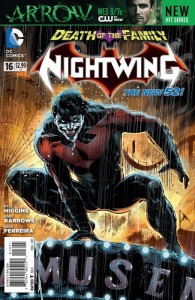
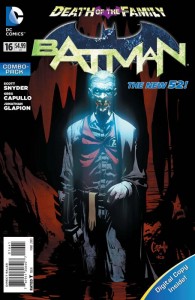
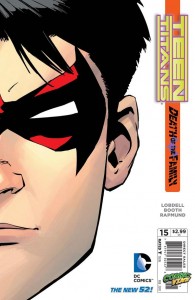
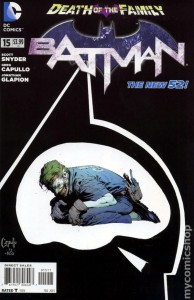
 Podcast RSS Feed
Podcast RSS Feed iTunes
iTunes Google Play
Google Play Stitcher
Stitcher TuneIn Radio
TuneIn Radio Android
Android Miro Media Player
Miro Media Player Comics Podcast Network
Comics Podcast Network